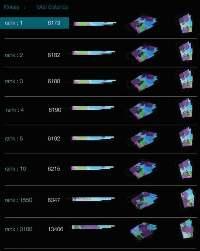Evolutionary Parametric Analysis for Optimizing Spatial Adjacencies

This research utilizes parametric and evolutionary software in order to create an analytical system intended to enhance efficiency within groups of complexly interconnected architectural program elements. The authors have developed a parametric definition that can diagrammatically arrange spatial volumes. These volumes represent the various building functions or ‘programs’ in terms of square footage. The driving parameter for these experiments is adjacency. The degree of adjacency is here viewed as the distance between the centers of programmatic masses. This type of approach offers a system of analysis that can create an extensive range of unique and otherwise unexplored solutions when faced with problems in developing complex order for spatial relationships. This script is a significant leap forward over existing research in this area with the ability for users to define an irregular shaped site boundary, input multiple stories, relate program elements to external adjacencies (views, parking, etc.), and handle an unlimited number of program elements. This paper uses a three-story hospital on a sloping site with fifty program elements to demonstrate the efficacy of this approach.
keywords: Programming, Evolution, Parametric, Spatial Adjacency


Add comment
Log in to post comments